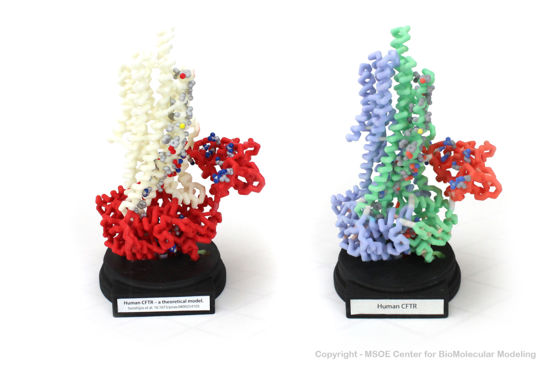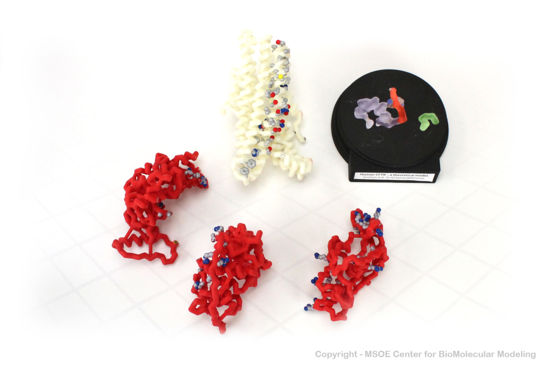Cystic fibrosis transmembrane conductance regulator (CFTR)
From Proteopedia
(Difference between revisions)
| Line 1: | Line 1: | ||
==Cystic fibrosis transmembrane conductance regulator (CFTR)== | ==Cystic fibrosis transmembrane conductance regulator (CFTR)== | ||
<StructureSection load='5UAK' size='340' side='right' caption='Cystic Fibrosis Transmembrane Conductance regulator' scene=''> | <StructureSection load='5UAK' size='340' side='right' caption='Cystic Fibrosis Transmembrane Conductance regulator' scene=''> | ||
| - | The CFTR is a chloride channel, and is regulated by PKA phosphorylation, cAMP levels, and ATP/ADP ratios. Mutations in the CFTR cause the disease cystic fibrosis. | + | The '''CFTR''' is a chloride channel, and is regulated by PKA phosphorylation, cAMP levels, and ATP/ADP ratios. Mutations in the CFTR cause the disease cystic fibrosis. |
One feature of the CFTR is a Walker motif, which is found in ATP binding proteins.It is also known as a P (or phosphate binding) loop. | One feature of the CFTR is a Walker motif, which is found in ATP binding proteins.It is also known as a P (or phosphate binding) loop. | ||
Revision as of 09:15, 9 January 2019
Cystic fibrosis transmembrane conductance regulator (CFTR)
| |||||||||||



